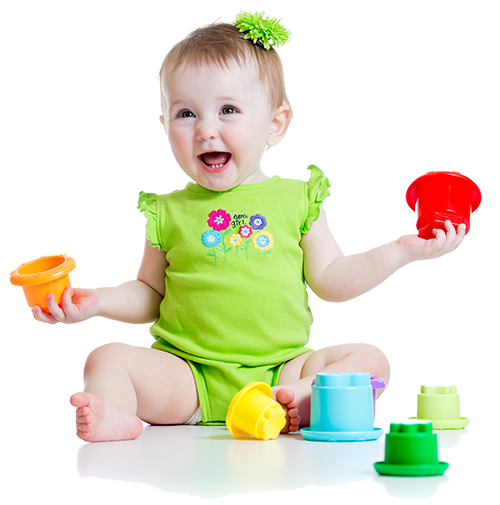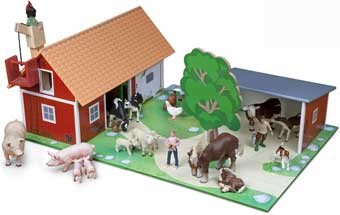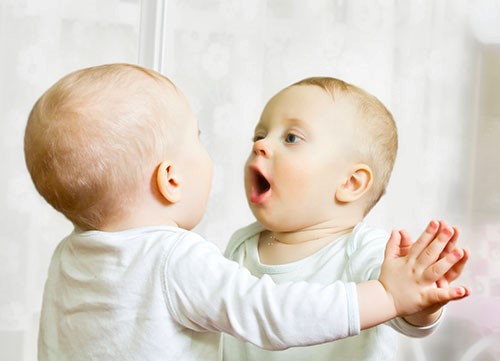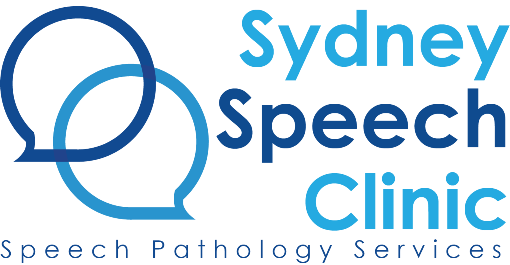 As Speech Pathologists we are often asked about language development in younger children. The baby who isn’t babbling, the 2 year old who isn’t saying any words yet or the preschooler who doesn’t seem to listen and pay attention are all common parental concerns.
As Speech Pathologists we are often asked about language development in younger children. The baby who isn’t babbling, the 2 year old who isn’t saying any words yet or the preschooler who doesn’t seem to listen and pay attention are all common parental concerns.
Here are some tips to help stimulate early language development:
First of all, consider your toys/books
You don’t need an expensive array of toys. Often the simpler the better for younger ones. Peek-a-boo and hide and seek games, pointing and naming in a book, feeding a doll together, and rolling a ball back and forth to each other are good activities for nurturing shared interest.
Basic pretend play can be developed using real objects such as an old telephone, hairbrush and dressing up clothes. Symbolic play can be developed by modelling (showing the child) how to play with small dolls/figurines.
All-singing, all-dancing toys with flashing lights and annoying noises (you know the ones we mean!) are of limited value. Seek out a range of toys and books that can stimulate a wider range of language skills:
For example; a farm set with animals can be used to develop:
Comprehension (understanding language) – listening and following directions e.g. where’s the cow? Can you put the horse in the stable?

- Vocabulary – naming the animals and copy the noises, simple action words (running, sleeping, washing, jumping, eating) and then later more complex verbs (galloping, shearing, grooming)
- Sentence building – ‘dog run’ can be expanded to ‘The dog is running’ and later on ‘The dog is running to chase the cat’
- Concepts – colours/sizes, open/shut the gate, climb up/down the barn ladder, full/empty bucket, clean/dirty animals, fast/slow and so on…..
- Sequencing – feed the animals and then put in their pens for the night.
- Social interaction/pretend play – Make the farmer pat the dog. Let’s feed the pigs! The boy wants to ride the horse….
Good early language toys for 2 – 4 year olds include; zoo or farm miniature animals, tea set with teddy/dolly, stacking toys that can be pushed over, bubbles, board books/lift the flap books, wind- up toys and YOU! Don’t underestimate how fun Mum and Dad can be without any props at all!
Techniques we suggest to help stimulate early language include:
Encourage babies to look towards people and objects when you name them. If your child already looks, then teach pointing by taking his/her finger and pointing towards the person/object.
Establish eye contact If your child has a difficult time with eye contact, talk about a toy held close to your face. When he/she makes eye contact, reward with the toy and your enthusiasm.
Repeat your child’s noises, speech sounds, and words to reinforce his/her verbal attempts and to increase the likelihood that he/she will do it again. This also teaches turn-taking. Pay attention when your child makes sounds! Follow the child’s attention and label and comment at the right time, and several times, to enhance their learning.
Read books together and discuss the pictures and actions. Most young children skip pages and do not look at books from start to finish which is fine! Talk about the pictures using short simple sentences to describe what is happening.
Photo albums are interesting to many children, as well as board books with photographs. Children will generally pay attention to photos sooner than drawings.
Encourage your child to listen to music and do movements with you, e.g. rolling arms with The Wheels on the Bus song. Encourage him/her to try to sing along by pausing: Old McDonald had a ___. E I E I ___.
Encourage imitation. Copying movements is a first stage in imitation and then sounds like animal noises, vehicles, coughing, sneezing and then speech sounds/simple words. Use books, TV, toys, and real things to practice.
Make silly faces and mouth movements together in a mirror. Encourage your child to press lips together, open and shut the mouth, poke tongue out, smile and frown. Do any sounds or movements that are fun for you both (‘raspberries’, fake sneezes). Don’t forget to imitate what your child does, too.
Gymboree and playgroups can be great ways to support learning speech/language from other children whilst also developing gross motor and social interaction skills.
Hold things the child wants near your face and name them. We want the child to watch our mouths and be more aware of oral movements. Name the item 3 times. Only hold them for a moment until the child watches you say it, then give the toy/juice etc. to the child immediately. Don’t require the child repeat.
Ask your child to give you things or point things out to you. Praise or give a small treat like a sticker for trying.
Comment rather than asking lots of questions. Parents often fall into the pattern of asking too many questions. If the questions are too complex or too frequent, children will often stay quiet. Try commenting on their play and your own play with statements (“Here comes the horse! He wants some hay. The horse is hungry”) and see if they start to engage more in the exchange.
Give visual choices and pause for a few seconds to give the opportunity for a turn in communication (2 items held just out of reach may be all that is needed to prompt the child to communicate a want or need). This may sound obvious but so often an opportunity is missed by just giving the child an item you know he/she wants without setting up a possible communication exchange.
Finally, HAVE FUN! Children learn best through play and when they feel relaxed and not under pressure to talk.
